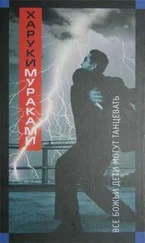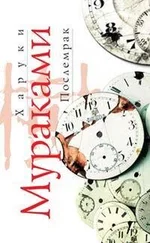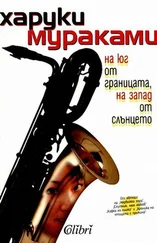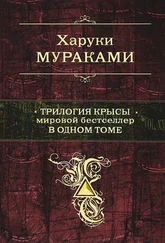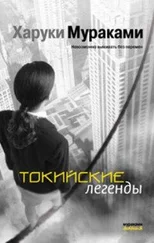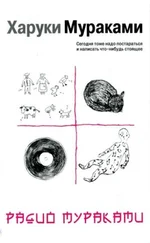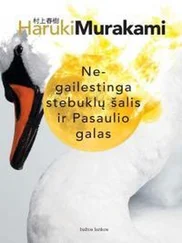—
Like the Commendatore had prophesized, at just past eight the following evening, I got a phone call from Menshiki.
I thanked him again for the dinner party. The food was amazing, I said. It was nothing, he replied. I want to thank you , Menshiki said, for letting me have such an enjoyable time. I also thanked him for the payment for the portrait, which was way more than we’d agreed to. Please don’t worry about it, Menshiki said modestly. That’s only to be expected, for such a wonderful painting. Once we’d finished all these polite exchanges there was a moment of silence.
“By the way, about Mariye Akikawa,” Menshiki began, as casually as if discussing the weather. “You remember the other day when I asked if you would have her model for a painting?”
“Of course I remember.”
“Yesterday I asked Mariye—actually Mr. Matsushima, the owner of the arts-and-culture center, asked her aunt—if it might be possible—and she agreed to model.”
“I see,” I said.
“So all the pieces are in place, if you’ll agree to paint the portrait.”
“But Mr. Menshiki, isn’t Mr. Matsushima a bit suspicious that you’re involved in this?”
“I’ve been very careful, so no need to worry. He sees me as acting as your patron of sorts. I hope you’re not offended…”
“I don’t mind,” I said. “But I’m surprised Mariye Akikawa agreed. She’s so quiet and docile, and strikes me as a timid girl.”
“Honestly, her aunt didn’t like the idea at first. She felt nothing good could come from modeling for a painting. I’m sorry if this offends you, as an artist.”
“No, most people would feel that way.”
“But Mariye herself seemed quite interested in modeling for the painting. She said if you’d paint her she’d be happy to pose. She’s the one who persuaded her aunt to agree.”
Why, I wondered? Was there some connection with the sketch of her I did on the blackboard? I didn’t venture to bring this up with Menshiki.
“Things have worked out perfectly, haven’t they?” Menshiki said.
I thought it over. Was this really the perfect way for things to go? Menshiki seemed to be waiting for my opinion.
“Could you tell me more about how this would unfold?”
Menshiki said, “It’s very simple. You’re looking for a model for a painting. And you think that Mariye Akikawa, from your art class, would be perfect. So you had the owner of the arts-and-culture center, Mr. Matsushima, sound out the girl’s guardian, her aunt. That’s the story. Mr. Matsushima personally recommended you. Said you have a sterling character, are an enthusiastic teacher, that you’re a talented artist with a promising future. I don’t appear anywhere in this. I made sure my name didn’t come up. Naturally she’ll be clothed when she models, and her aunt will accompany her. And you’ll finish the sessions by noon. Those are the conditions they laid down. What do you think?”
Following the Commendatore’s advice (“Always turn down first offers”), I put on the brakes.
“I don’t have any problem with the conditions, but can I have a bit more time to think about this?”
“Of course,” Menshiki said calmly. “Think about it as much as you’d like. I’m not trying to rush you. Obviously you’re the one who would paint the picture, and if you don’t feel like doing it, that’s the end of it. I just wanted to let you know that everything’s all set, as far as I’m concerned. One more thing, perhaps a little off topic, but I’m planning to pay you fully for the painting.”
Things are really moving along here, I thought. Everything’s evolving amazingly quickly and smoothly, like a ball rolling down a slope… I pictured Franz Kafka seated halfway down the slope, watching the ball roll by. I needed to be cautious.
“Can you give me two days?” I asked. “I should be able to give you an answer then.”
“That’s fine. I’ll call you again in two days,” Menshiki said.
We ended the call.
Truth be told, I really didn’t need two days to give a reply. I’d already made up my mind. I was dying to paint Mariye Akikawa’s portrait. Even if someone tried to stop me, I’d take on the task. The only reason for asking for two extra days was that I didn’t want anyone else to dictate the pace of events. I needed to stop and take a deep breath, something instinct—and the Commendatore—had taught me.
It is like trying to use a sieve to hold water , the Commendatore said. No one ever can float something full of holes on water .
His words hinted at something, something to come.
29
ANY UNNATURAL ELEMENTS
Ispent those two days gazing, back and forth, at the two paintings in my studio—Tomohiko Amada’s Killing Commendatore and my own painting of the man with the white Subaru Forester. Killing Commendatore was hanging now on the white wall of the studio. The Man with the White Subaru Forester was in a corner of the studio facing the wall (only when I wanted to look at it did I return it to the easel). Other than gaze at those paintings, I killed time reading books, listening to music, cooking, cleaning, weeding the garden, taking walks nearby. I didn’t feel like taking up my paintbrush. The Commendatore didn’t appear, and maintained his silence.
As I hiked the mountain roads nearby, I tried to find a place from which I could view Mariye Akikawa’s house. But I could never find it. When I saw it from Menshiki’s house, I gathered it wasn’t far from me, but the topography obstructed my view. As I hiked through the woods I unconsciously was on the lookout for hornets.
What I rediscovered, spending two days gazing at the paintings, was that my feelings were spot on. Killing Commendatore wanted me to break its “code,” and The Man with the White Subaru Forester wanted the artist (namely me) to not make any more revisions. And both of these appeals were very strong—at least I felt them strongly—and I had to obey. I left The Man with the White Subaru Forester as it was (though I did try to fathom the basis for why it wanted to be left as is), and struggled to decipher Killing Commendatore . But both paintings were enveloped in an enigma, as hard as a walnut shell, and I couldn’t find the means to crack the shell open.
Without the upcoming portrait of Mariye Akikawa to deal with, I might very well have spent my days, ad infinitum, gazing back and forth between these paintings. But in the evening of the second day Menshiki called, and for the time being, at least, the spell was broken.
“Did you make a decision?” Menshiki said, after we’d greeted each other. He was, of course, asking about painting Mariye Akikawa’s portrait.
“I’ll accept the offer,” I replied. “But I do have one condition.”
“Which is?”
“I can’t predict what kind of painting it will turn out to be. I can’t know what style I’ll paint it in until Mariye is actually here and I actually begin. If no good ideas come to me, I might not finish. Or it might be finished, but I might not like it. Or you might not like it. So I’d like to do it spontaneously, not because you commissioned it, or because you suggested I do it.”
A momentary pause, then Menshiki said, probingly, “In other words, if you’re not satisfied with the finished painting it won’t end up mine, under any circumstances. Is that what you’re saying?”
“That’s a possibility. Anyway, I’d like to be the one who decides what to do with the painting. That’s my condition.”
Menshiki gave it some thought before he spoke. “The only thing I can do, I think, is agree. If not accepting that condition means you won’t paint it.”
Читать дальше

